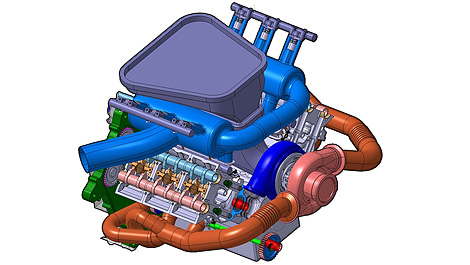IMO I think that the new "motor-generator-assisted turbocharger" will not need VTG and or a wastegate. It will utilize a assisting mode and produce torque to supplement the available exhaust gas energy in accelerating the rotor up to a given rotor speed.
Honeywell Garrett Quote https://www51.honeywell.com/technologyl ... &techId=43
"The system can be so designed that the assisting motor torque reaches zero value at or about the torque peak speed of the engine when the turbocharger is running at peak efficiency. An electric control system is employed to allow the assisting motor to supply torque to the turbocharger rotor over the low engine speed range, and the electric control system can switch to a generator mode over the high engine speed range. Through the use of such a control, the amount of power generated by the assisting motor can be matched to the excess exhaust gas energy necessarily provided at the high engine speed range so that a constant boost level can be maintained in the air intake system. Accordingly, one important benefit of the present invention is the elimination of the conventional waste gate thereby mining or eliminating the inefficiencies of prior systems directly related to the unharnessed and wasted exhaust gas flow. Furthermore, when the assisting motor-generator is producing electric current from the excess exhaust gas energy as the engine is running at high speeds in the generator mode, the regeneration current can be fed into the vehicle electric system for the purpose of charging the batteries and the assisting motor-generator can provide a braking action to the turbocharger rotor. Thus, the assisting motor can take current from the batteries when boost needs to be augmented over the low engine speed range and can feed current back into the batteries over the high engine speed range when there is a need to limit the maximum turbocharger speed and when there is excess energy available in the engine exhaust gas stream.
Accordingly, the improved turbocharger and controller system of the present invention can combine the elements of a rotary electric machine and a turbocharger in an optimal integrated design that can maximize the torque applied to the turbocharger rotor and can minimize any compromise in the turbocharger basic design configuration, with an electric controller that can eliminate the waste gate of prior art systems, thereby improving engine performance and operating efficiency, and decreasing engine emissions."
This could possibly be a plug and play system or with or without very little changes, since the technology is over ten years old and has been improve on.
Borg Warner and Mitsubishi have similar systems that are most likely being tested.





